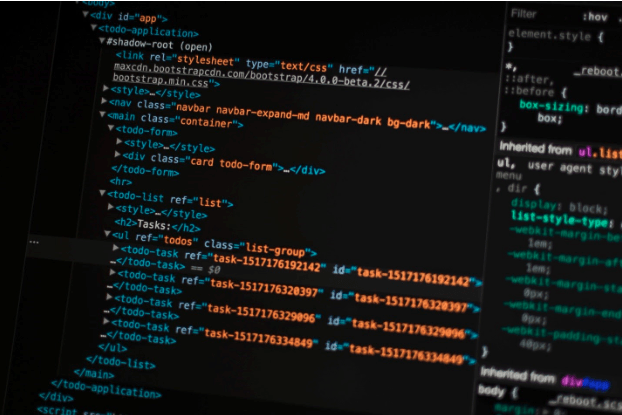Python has increased in popularity during the past few years. It has even surpassed Java. This programming language grew in demand due to the rise in machine learning. A lot of developers use python for data analysis and web application development for various reasons. For example:
- It is easy to learn the syntax
- Portable
- Python has powerful and abundant libraries
It is a great time to be a python developer. This post will help you know more about this fast-growing programming language and how to utilize it in web development.
What Is Web Development?
People new to programming might be wondering what web development is. It isn’t easy to define it precisely, but we can casually say it is the building or creating and maintaining websites.
Web development has two faces involved: the frontend and the backend. The frontend is the part of the website that interacts with clients and visitors. Meanwhile, the web developer handles the backend, which contains business logic and interacts with a database.
Advantages Of Using Python To Design Web Pages
- Ease of learning: This is one reason python is the most popular language for beginners and first-time learners. Python depends on common expressions and whitespace, therefore giving you the freedom to write fewer codes when compared to other programming languages like Java or C++.
Another easy thing about python is that it has a lower entry barrier because it is relatively closer to our everyday language. This makes the codes easier to understand.
- Widespread popularity: One of the most popular programming languages in the world is python. Due to its popularity, it is regularly updated with new libraries and features. In addition, it provides excellent community support and documentation at the same time.
New developers love python because it provides extensive support and a framework that helps them begin their developer journey with ease.
- Fast prototyping: It is fast because it takes less time to build projects compared to other programming languages. As a result, you can bring your ideas to life faster, thereby allowing you to get pointers and rehearse quickly.
Many startups use python because it helps them hit the market sooner, consequently giving them a competitive edge.
- Rich library and ecosystem: There is a comprehensive range of packages and library tools offered by python to help people access pre-written code and streamline their application development time.
For instance, you can have access to Numpy and Pandas. People use these for mathematical analysis. Pygal is used for charting, while SLQALchemy is used for compassable queries.
Python also provides breathtaking web frameworks like Flask and Django.
We will explain more about these later in this post.
Python Web Frameworks

When you hear the word “web framework”, think of a toolbox.
Web frameworks are collections of packages and modules containing pre-written and standardized codes. They support web application development, make the development fast, more comfortable, and make programs more scalable and reliable.
In summary, frameworks have already built-in components that set up your projects, making them fast and easy.
Python web frameworks are only used for backend activities. For instance:
- Server-side technology
- Aid URL routing
- Support HTTP requests and responses
- Access databases and web security, etc.
Python frameworks are recommended for web developers because it helps them make complex applications in a short time.
Popular Web Frameworks
We will be touching on two main common popular python web frameworks, which are Django and flasks. These two are the most popular by a wide margin.
Django is a python web framework providing an open-source and high-level framework. As a result, it encourages rapid development and a clean and practical design.
Django is scalable, secure, and fast. It offers detailed documentation and strong community support. This python framework is incredibly flexible and makes it possible to work with MVPs to larger companies.
Some of the largest companies that use Django are Spotify, Pinterest, Dropbox, and Instagram.
Flask is regarded as a micro-framework or a minimalist web framework. As a result, it lacks a lot of features and functionality when compared to Django.
Some of the features lacking are web template engine, authentication, and account authorization. The lightweight and minimalistic Flask component makes it possible for you to add libraries and extensions that you need when coding.
You can code with this without the framework automatically providing you with codes. The mechanism of action behind Flask is that it gives you only the component you need to build an app.
This gives web developers all the control and flexibility needed. Large companies like Uber, LinkedIn, and Netflix use Flask because it is a general and robust web framework.
Other common python frameworks are Turbogears, Web2py, and Pyramid.
Which Should You Use?
The python framework you use depends on a lot of factors. First and foremost, it depends on your skills as a web developer. If you are experienced, you can develop your program with something more fundamental.
However, if you are a beginner or junior developer, you can use Django or another framework that provides enormous support.
Another factor to consider is if you want a foundation codebase to build off or enjoy the flexibility to build your codebase’s backbone.
If you prefer the first option, choose Django. However, if you want the second option, go for Flask.
They can both achieve the same functionality, but remember it is more important to start coding than to fret over what framework to use.
Python Libraries For Web Development
Python has useful libraries for web development. Some of them are:
Scrapy: Use this great python library if you need a web crawler to extract data for your application. Widely used for many functions like data mining, scraping, automated testing, and many more.
Zappa: This is a powerful library to develop serverless AWS Lambda applications.
Requests: Web developers use this powerful library to send HTTP requests easily. This HTTP request communicates with an application, thereby allowing you to get HTML pages or data.
Dash: This python library helps web developers with projects that have to do with data visualization. It is built on top of Flask and offers features like dashboards, graphs, charts, and much more.
A Roadmap For Developing Websites With Python
Step 1: HTML + CSS
The first step in learning web development is to learn HTML and CSS. These are the basics of learning web design. It would help to learn how to structure responsive static pages to kick your web development journey.
You will also gain more knowledge if you learn other concepts like HTTP, Internet, hosting, DNS, browsers, and more. It is possible to learn a CSS framework like Bootstrap or materialize.
All these are important because they will help to speed up your development.
Step 2: JavaScript
Another step to take is to learn JavaScript. Learn all the basic concepts like string manipulation, loops, control statements, arithmetic and operators, general conventions, variables, and data types.
Having these basics will make it easier for you to apply JavaScript to the client-side code.
Step 3: DOM & jQuery
After learning JavaScript, move on to the manipulation of DOM and jQuery. This is a JavaScript library that makes it easier to manipulate DOM.
With this, you will be able to create dynamic pages.
Frontend Framework
Though this is optional, it is highly recommended because learning a front-end framework like React will help you build functional full-stack web applications.
With this, you can create beautiful SPAs. This is an advantage because it is a requirement for hiring frontend or full-stack developers.
Step 4: Python
This is focused on the backend of the website, and you have to know the basics of python before you learn DOM manipulation. However, you will be prepared for Django by learning these fundamentals.
It shouldn’t be too tricky or challenging to learn introductory python because many of the concepts are similar to JavaScript.
Step 5: Django + Database
Django helps you set up your backend environment and even develops the business logic. It would help to learn about SQLite databases, the CRUD function, and how to make queries.
You will be able to make a full-stack application with this.
How To Create Your First Web Application
We will show you how to create a flask “Hello world” app as an introduction.
Installing Flask
This is the first thing you have to do. The type of Flask you have to use depends on the version of python you are using. We have pip or pip3 Flask.
Flask app
The next thing after installing Flask is to create a filed named hello.py using the following code:
- Line 1 imports Flask
- Line 2 instantiates Flask with app variable, using the __name__ attribute
- Line 4 sets up a route / for your index, or default, page. When a user goes to locahost:5000/, you can set up a particular code to be triggered
- Line 5 creates a function called hello
- Line 6 returns the string Hello World! to the user
- Line 8 tests to make sure the right script is being run
- Line 9 runs the application from the app variable we initialized so that the user can visit the web application by going to the localhost
How To Become A Python Web Developer
To summarize, by reading this post, you are on your way to becoming a talented web developer using python.
We hope this post has given you a good overview of what python is, how it operates, and its uses. This understanding can give you directions in your pursuit of learning and mastering python.










